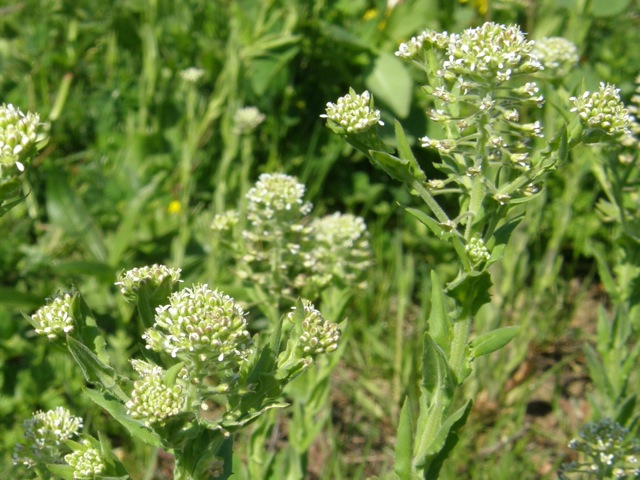Brassicaceae, the mustard family.
Description:
Plant:
Erect, downy-hairy plant 8"-16" high branching near the top into several,
dense elongating clusters of
small white flowers and elliptical seed pods. Annual or biennial.
Flowers:
White, small, < 1/4", with four petals and four sepals, in a tight cluster
(raceme) that elongates as the lower blooms develop into fruit.
Typically the stem branches near the top into several such clusters.
Leaves:
Alternate, ovate to arrowhead-shaped, 1"-1.5", toothed, sessile, and clasping the stem on
which they are densely packed. Both the stem and leaves are covered with fine hairs.
Fruit:
A stalked, elliptical capsule with a short, terminal spike.
Blooming:
April-June
Habitat:
Fields, waste areas, disturbed ground.
Comments:
Naturalized from Europe, this member of the mustard family is sometimes
a troublesome weed in disturbed ground.
The common name refers to the fact that the young seed pods have a peppery flavor and can be
used as seasoning.
The young leaves can also be eaten, both fresh in salads, or boiled as a potherb.
The plant is also known as Field Pepperweed, Field pepperwort, and Cow Cress.
Where to find it:
I have found it in recently planted lawn areas adjacent to the Islamic center, and scattered
in other waste areas of the park.
